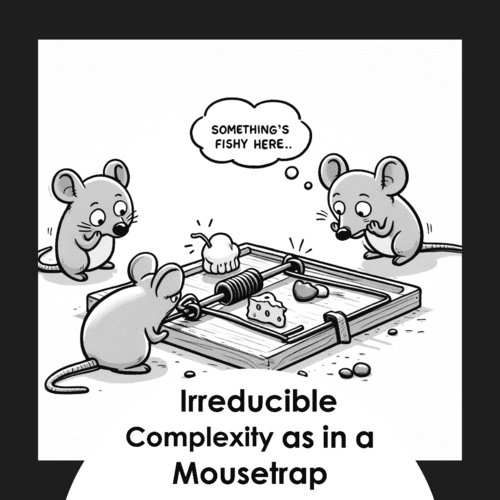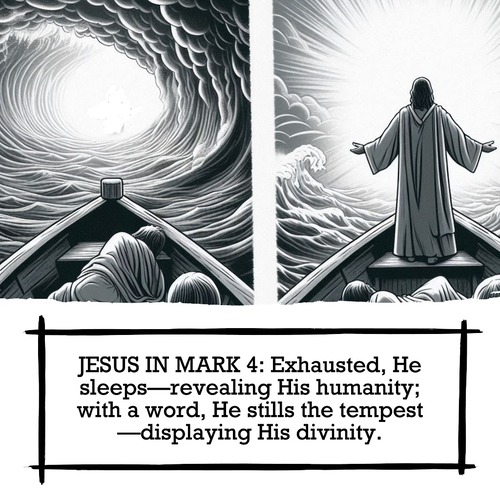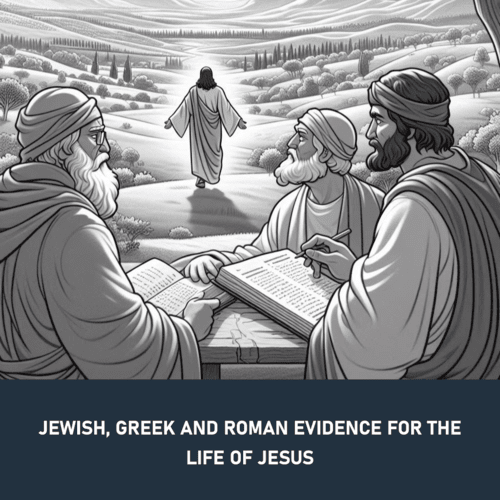The Promised Land: A Type of Heaven or of Christian Life? Or Both?
The grand narrative of Israel entering the Promised Land is one of Scripture’s most compelling motifs. But what exactly does this ancient story symbolise for Christians today? Does the Promised Land primarily represent heaven—our final destination after death? Or does it typify the Christian life here and now, with its mix of victories and ongoing battles?
This question isn’t merely academic. How we understand Bible typology shapes our expectations for the Christian life, our approach to spiritual warfare, and our ultimate hope. Let’s explore the different Reformed perspectives and consider which view best aligns with the full biblical witness.
THE THEOLOGICAL LANDSCAPE: THREE REFORMED VIEWS
Within Reformed theology, three main interpretations have emerged regarding what the the Promised Land typifies:
The Heaven-Focused View: Many Puritans, Jonathan Edwards, and classical Reformed theologians have emphasised Canaan as primarily typifying heaven. This view sees Israel’s wilderness wandering as our earthly pilgrimage and the crossing of the Jordan as death, after which God’s people enter eternal rest.
The biblical basis appears strong, particularly in Hebrews 4:1-11, where the author connects Canaan’s “rest” with a remaining Sabbath rest for God’s people. Hebrews 11:8-16 also describes Abraham as looking forward to “the city with foundations, whose architect and builder is God” and notes the patriarchs were “longing for a better country—a heavenly one.”
The Christian Life View: Other Reformed thinkers, including Abraham Kuyper and certain Dutch Reformed theologians, have emphasised Canaan as typifying the Christian life in the present age. They point to Israel’s continued battles in the Promised Land as paralleling our spiritual warfare (Ephesians 6:10-18) and progressive sanctification.
This view notes Israel didn’t simply enter a trouble-free paradise when crossing the Jordan. Rather, they faced ongoing enemies, occasional defeats, and the continuous call to faithful obedience—much like Christians today who’ve received salvation, yet still battle sin and opposition.
The Already/Not Yet View: Contemporary biblical theologians such as Geerhardus Vos and Herman Ridderbos have championed a view that integrates both perspectives. This “already/not yet” approach sees the Promised Land as a rich type that points to both our present inheritance in Christ and our future heavenly home.
THE CASE FOR THE “ALREADY/NOT YET” VIEW
When we examine Scripture’s treatment of this theme, we find compelling evidence that the Promised Land typology carries a dual significance. Here’s why this integrated view offers the most satisfying and biblically comprehensive understanding:
Connections to Present Christian Experience
Several biblical passages connect Canaan-like imagery to the Christian life now:
- Patterns of Spiritual Warfare: Just as Israel had to fight battles after entering Canaan, Paul describes Christians as engaged in spiritual warfare against “rulers, authorities, powers of this dark world, and spiritual forces of evil” (Ephesians 6:12). Our inheritance in Christ is a present reality, but one that involves ongoing conflict.
- The Language of “Rest”: In both Joshua and Hebrews, “rest” isn’t passive but active—not the absence of activity but the freedom to serve God faithfully in His presence. Christians today have entered a form of spiritual “rest” in Christ (Matthew 11:28-30) while still labouring in His kingdom.
- Present Inheritance Language: The New Testament frequently speaks of salvation benefits in present-tense “inheritance” language, echoing the land promise. Ephesians 1:13-14 describes the Holy Spirit as “a deposit guaranteeing our inheritance,” indicating that we’ve received a foretaste of what’s to come.
Connections to Future Heavenly Rest
Simultaneously, Scripture points toward a future, consummated fulfilment:
- Hebrews 4’s Explicit Connection: Hebrews 4:1-11 directly links Canaan’s rest with a future “Sabbath rest” that remains for God’s people—clearly pointing beyond present Christian experience.
- Seeking a Better Country: Hebrews 11:16 portrays the patriarchs as seeking “a better country—a heavenly one,” suggesting the land promise ultimately points toward new creation.
- Future Inheritance: The New Testament also speaks of inheritance as future reality. 1 Peter 1:4 describes “an inheritance that can never perish, spoil or fade… kept in heaven for you.”
Theological Coherence of Dual Typology
The “already/not yet” view isn’t a compromise but a recognition of Scripture’s redemptive-historical framework:
- Inaugurated Eschatology: Throughout the New Testament, we see Christ has inaugurated the kingdom and its blessings, though their *consummation* awaits His return. We are “seated with Christ in heavenly realms” (Ephesians 2:6) while still battling earthly struggles.
- Progressive Covenant Fulfilment: Reformed covenant theology recognizes that biblical promises often find fulfilment in stages. The land promise finds initial fulfilment in our present union with Christ but awaits complete fulfilment in the new heavens and earth.
- Christ as the Ultimate Fulfilment: Jesus Himself is the true Israel who perfectly receives the inheritance and grants it to His people. In Him, we possess both present spiritual blessings and future glory.
LIVING IN LIGHT OF THIS TRUTH
Understanding the Promised Land as typifying both our present Christian experience and our future heavenly rest has practical implications:
- Present Confidence: We can live with assurance that we have *already* received a genuine inheritance in Christ—not just a promise of future blessing, but present standing, resources, and spiritual blessings.
- Realistic Expectations: We shouldn’t be surprised by ongoing battles and difficulties. The Christian life, like Israel’s experience in Canaan, involves warfare, occasional setbacks, and the need for continued faithfulness.
- Future Hope: Yet our present struggles don’t diminish the certainty that a greater fulfilment awaits—a “better country” where sin, death, and opposition will be no more.
THE PROMISED LAND: EMBRACING THE FULL BIBLICAL PICTURE
When we return to our original question—does the Promised Land point to heaven or to the Christian life?—the biblical answer appears to be “yes.” This isn’t theological fence-sitting but recognition of Scripture’s rich typological design.
The Reformed tradition at its best has recognized that biblical types aren’t flat, one-dimensional symbols but multifaceted pointers to the realities of redemption—realities that often unfold in stages across redemptive history. The Promised Land stands as a powerful example of this principle.
Like Israel, we have crossed our Jordan through baptism into Christ. We now possess real spiritual territory while still battling for its complete realization. And we look forward to the day when our present foretaste gives way to perfect, eternal rest in the presence of God.
This “already/not yet” understanding doesn’t just resolve a theological debate—it provides the balanced vision we need to live faithfully as Christians, neither underestimating our present blessings nor losing sight of our future hope.
THE PROMISED LAND: RELATED FAQs
Did Jesus ever directly connect Himself to the Promised Land typology? While Jesus didn’t explicitly identify Himself as the fulfilment of the Promised Land, He did claim to offer the true “rest” that Canaan foreshadowed (Matthew 11:28-30). His kingdom proclamation and inheritance language also implicitly connected Him to the land promise fulfilment, particularly when He promised the meek would “inherit the earth” (Matthew 5:5).
- How does the New Testament’s emphasis on the church as God’s temple relate to Promised Land typology? The New Testament’s temple imagery (1 Corinthians 3:16, Ephesians 2:19-22) works alongside Promised Land typology, as both emphasize God dwelling with His people. The temple stood at the centre of the Promised Land, and now God’s presence dwells in believers corporately as the church and individually through the Spirit, reinforcing the “already” aspect of our inheritance.
- Does Revelation’s portrayal of the New Jerusalem connect to the Promised Land? Absolutely. Revelation 21-22 portrays the New Jerusalem as a perfect cube, mirroring the Holy of Holies, descending to a renewed earth—effectively showing God’s presence filling the ultimate Promised Land. This vision powerfully merges land promise, temple imagery, and Eden restoration, demonstrating how these typological threads converge in the final fulfilment.
- How should dispensationalists and covenant theologians reconcile their views on the Promised Land? While dispensationalists typically emphasise a future literal fulfilment for ethnic Israel and covenant theologians stress spiritual fulfilment in Christ, both can recognise the “already/not yet” framework within their systems. The key reconciliation point is acknowledging that biblical promises find fulfilment according to their intended nature (whether literal or typological) while maintaining the centrality of Christ in all fulfilment.
How does the “already/not yet” understanding of the Promised Land protect against prosperity gospel teachings? The “already/not yet” framework acknowledges real spiritual blessings now while recognizing ongoing struggles until Christ returns. This balanced view safeguards against prosperity teaching by acknowledging that, like Israel in Canaan, Christians will face battles and occasional defeats in this age, while also protecting against an overly pessimistic view that sees no present benefit to salvation.
THE PROMISED LAND: OUR RELATED POSTS
Editor's Pick

Self-Authentication: Why Scripture Doesn’t Need External Validation
"How can the Bible prove itself? Isn't that circular reasoning?" This objection echoes through university classrooms, coffee shop discussions, and [...]
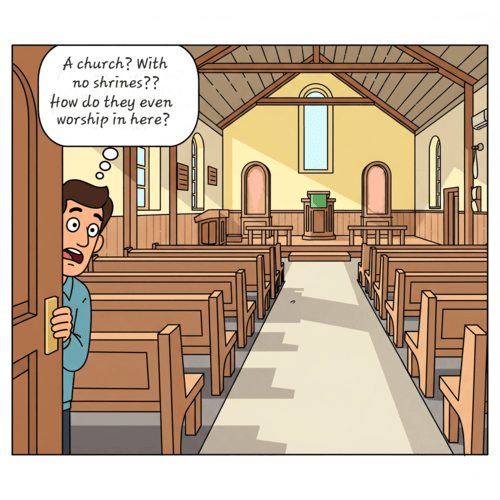
Do Christians Need Holy Shrines? Why the Reformed Answer Is No
Walk into a medieval cathedral and you'll encounter ornate shrines, gilded reliquaries, and designated "holy places" where pilgrims gather to [...]

I Want To Believe, But Can’t: What Do I Do?
"I want to believe in God. I really do. But I just can't seem to make it happen. I've tried [...]
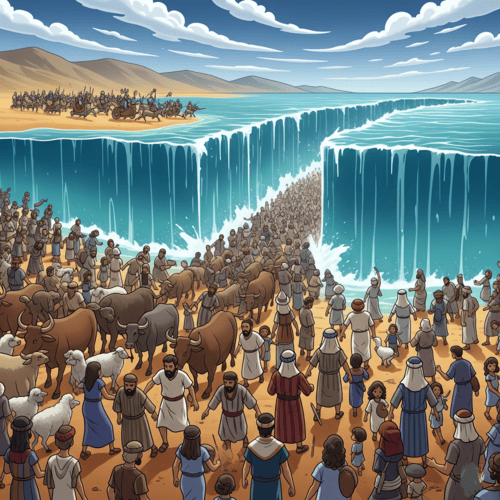
BC 1446 or 1250: When Did the Exodus Really Happen?
WHY REFORMED SCHOLARS SUPPORT THE EARLY DATE Many a critic makes the claim: “Archaeology has disproven the biblical account [...]

Does God Know the Future? All of It, Perfectly?
Think about this: our prayers tell on us. Every time we ask God for something, we’re confessing—often without realising it—what [...]

Can Christian Couples Choose Permanent Birth Control?
Consider Sarah, whose fourth pregnancy nearly killed her due to severe pre-eclampsia, leaving her hospitalised for months. Or David and [...]

Bone of My Bones: Why Eve Was Created From Adam’s Body
"This at last is bone of my bones and flesh of my flesh!" Adam's joyful exclamation upon first seeing Eve [...]

Is Calvinism Fatalism in Christian Disguise? Think Again
We hear the taunt every now and then: "Calvinism is just fatalism dressed up in Christian jargon." Critics argue Reformed [...]

Can Churches Conduct Same-Sex Weddings?
In an era of rapid cultural change, churches across America face mounting pressure to redefine their understanding of marriage. As [...]

Gender Reassignment: Can Christian Doctors Perform These Surgeries?
In the quiet of a clinic, a Christian physician faces a challenging ethical question. A patient sits across the desk, [...]
SUPPORT US:
Feel the Holy Spirit's gentle nudge to partner with us?
Donate Online:
Account Name: TRUTHS TO DIE FOR FOUNDATION
Account Number: 10243565459
Bank IFSC: IDFB0043391
Bank Name: IDFC FIRST BANK



